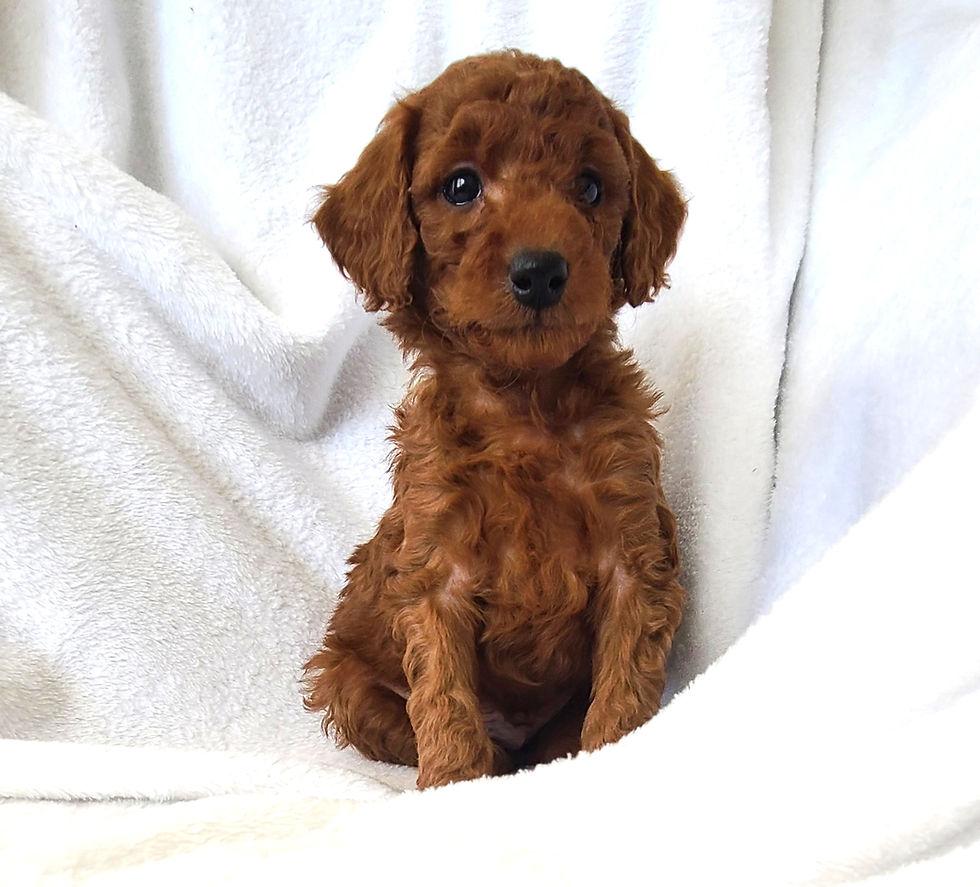Strategies to Prevent a Picky Eater
- Julia Turik

- Aug 10
- 2 min read
Updated: Oct 7

Don't give me that look, Ollie! We know how to handle your picky eating demands...you cutie!
We love our goldendoodles. But let’s be honest—sometimes they act like they belong on a reality cooking show, sniffing their kibble like it’s a questionable appetizer at a five-star restaurant. Here’s how to stop the drama before it starts:
Serve Dinner on a Schedule, Not on Demand
Dogs thrive on routine (and so do your nerves). Feed them at the same times each day. Pick up the bowl after 15–20 minutes. No bites? No worries. They’ll catch on quick. You’re not running an all-day buffet.
Treats Are Not Bribery—They're Rewards
Too many treats will make your pup side-eye their kibble like it’s a punishment. Keep treats special. Think of them like doggie dessert—earned, not expected.
No Gourmet Rotations, Please
Switching food every week can turn your dog into a furry food snob. Find a high-quality diet and stick with it. Changing too often leads to pickiness and potential digestive disaster (a.k.a. poop you didn’t sign up for).
Create a Zen Dining Experience
Would you want to eat next to a leaf blower? Exactly. Feed your dog in a quiet, calm spot. No kids yelling, no vacuum roaring, and no squirrels doing gymnastics out the window.
Make Mealtime Interesting (but Not Too Interesting)
If your goldendoodle needs a little motivation, try a puzzle feeder or food toy. It engages their brain and their belly. Bonus: they’ll be too busy to beg while you eat.
Don’t Be a Short-Order Cook
We know, the sad eyes are powerful. But avoid turning dinner into a performance. Hand-feeding and coaxing just teaches them that fussing gets them better service. Remember, you're the parent, not the personal chef.
When in Doubt, Check It Out
If your goldendoodle suddenly stops eating like their usual food-loving self, it could be more than picky behavior. Dental pain, upset stomachs, or underlying health issues should be ruled out by a vet.
Understanding Picky Eating in Dogs
Picky eating in dogs can stem from various factors. Some dogs may develop preferences based on their experiences. Others might be influenced by their environment or even their owners' behaviors. Understanding these factors can help you address the issue more effectively.
The Role of Environment
The environment plays a significant role in a dog’s eating habits. A noisy or chaotic setting can discourage a dog from eating. Ensuring a peaceful dining area can make a big difference.
Health Considerations
Always consider health when a dog becomes picky. Changes in appetite can indicate health issues. Regular vet check-ups are essential to rule out any underlying problems.
Training and Consistency
Training your dog to eat on a schedule is crucial. Consistency helps them understand when to expect meals. This can reduce anxiety around mealtime and promote better eating habits.
Bottom Line
You’re raising a happy, healthy dog—not a canine Gordon Ramsay. Keep things consistent, calm, and a little bit boring (in a good way). This approach will help you avoid creating a pint-sized diva at dinnertime.
For more tips on managing your dog's eating habits, consider checking out this resource.



Comments